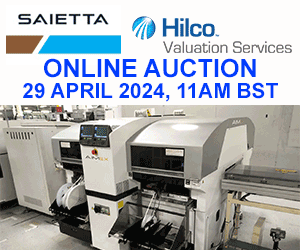IPC’s PCB Technology Trends Study Details How PCB Manufacturers Meet Current and Future Technology Demands
BANNOCKBURN, Ill., USA — PCB Technology Trends 2018, a new global study published by IPC is now available. The survey-based study shows how printed circuit board (PCB) manufacturers are meeting today’s technology demands and looks at the changes expected by 2023 that will affect the whole industry. Based on data from 74 companies worldwide, the 213-page report presents data on PCB technology and OEMs’ PCB requirements as of 2018, as well as OEMs’ use of emerging technologies. Predictions from both industry segments indicate what these measurements are expected to be five years into the future.
The data on OEMs’ use of emerging technologies showed that more than half of those surveyed are currently making products that communicate with the Internet of Things and three quarters make products that depend upon sensor inputs. By 2023, more than half of the reporting OEMs expect at least some of their products to incorporate artificial intelligence and more than one-third expect to make products that interface with humans via neural networks.
Interesting regional differences emerged on the use of blind vias, which are more commonly specified by OEMs in North America and Europe than in Asia. The use of stacked vias by PCB fabricators is also more prevalent in Asia today, but fabricators in all regions expect the use of stacked vias to grow, displacing staggered vias. Asian PCB fabricators are also leading the way in the use of printed electronics, which is expected to grow in all regions by 2023.
Data on board properties cover thickness, layer count, density, line width and spacing, via diameters, aspect ratios, I/O pitch, via design, blind and buried vias, and thermal properties. Use of materials looks at rigid, flexible, stretchable, metal core, loss characteristics and surface finishes. The PCB industry’s use of special structures covers embedded components and chip packages, and its use of printed electronics includes 3D printing and e-textiles. Survey participants’ comments on compliance and technical challenges and trends are included. In addition, the data in the report are segmented by two regions — North America and Europe in one segment, and Asia in another segment — and by two types of products — installed and mobile.











